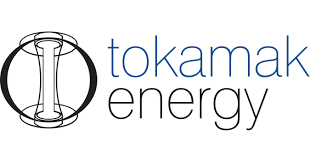Tokamak Energy (TE) in the U.K. recently announced that it has demonstrated a world-first with its privately funded spherical tokamak. They achieved a plasma temperature of two hundred and twelve million degrees Fahrenheit. This is the threshold necessary for commercial nuclear fusion energy.
TE is based in Oxford, England. They said that this is “by far the highest temperature ever achieved in a spherical tokamak and by any privately funded tokamak”. It noted that while several government laboratories in the U.IK. have reported plasma temperatures above the two hundred- and twelve-degrees million degrees Fahrenheit in conventional tokamaks, TE had reached this milestone in just five years at a cost of less than sixty six million dollars in a much more compact fusion device than those found in government laboratories. TE added that the milestone of achieving two hundred and twelve degrees Fahrenheit plasma has been verified by an independent advisory board consisting of international experts. TE said, "This achievement further substantiates spherical tokamaks as the optimal route to the delivery of clean, secure, low-cost, scalable and globally deployable commercial fusion energy.”
The purpose of the ST40 is to concentrate on the commercial applications of fusion energy. Specifically, the goal of the ST40 is to make fusion reactors commercially viable. The spherical tokamak design is more compact that conventional tokamaks. The magnets meet in the center of the chamber to form a post. This gives the reactors an oblate shape like and apple. This allows the magnets to sit closer to the plasma stream so the magnets can be smaller and use less power. However, they are able to generate more intense fields than conventional tokamaks.
The TE ST40 device will now undergo an upgrade. It will be used to develop technologies for future fusion energy devices. The ST-HTS will be the world’s first spherical tokamak to demonstrate the full potential of high-temperature superconducting (HTS) magnets. It is due to be commissioned in the mid-2020s. This device will demonstrate multiple advanced technologies needed for fusion energy. It will also inform the design of a world’s first fusion pilot plant which is scheduled to be commissioned in the early 2030s.
Tokamak fusion reactors use magnets to constrain and isolate a plasma so it can be heated to the extreme temperatures at which the fusion reaction occurs. Powerful magnetic fields are necessary for tokamaks to contain the superheated fuel. Higher magnetic fields allow for the creation of smaller tokamaks. High temperature superconductors can create these stronger magnetic fields. That makes them important for commercial fusion power.
TE grew out of the Culham Centre for Fusion Energy which is based in Oxfordshire. TE is also manufacturing a complete HTS magnet system. It will be the first validation of strong magnetic fields with HTS coils in a spherical tokamak. Chris Kelsall is the CEO of TE. He said, “When combined with HTS magnets, spherical tokamaks represent the optimal route to achieving clean and low-cost commercial fusion energy. Our next device will combine these two world leading technologies for the first time and is central to our mission to deliver low-cost energy with compact fusion modules.”
